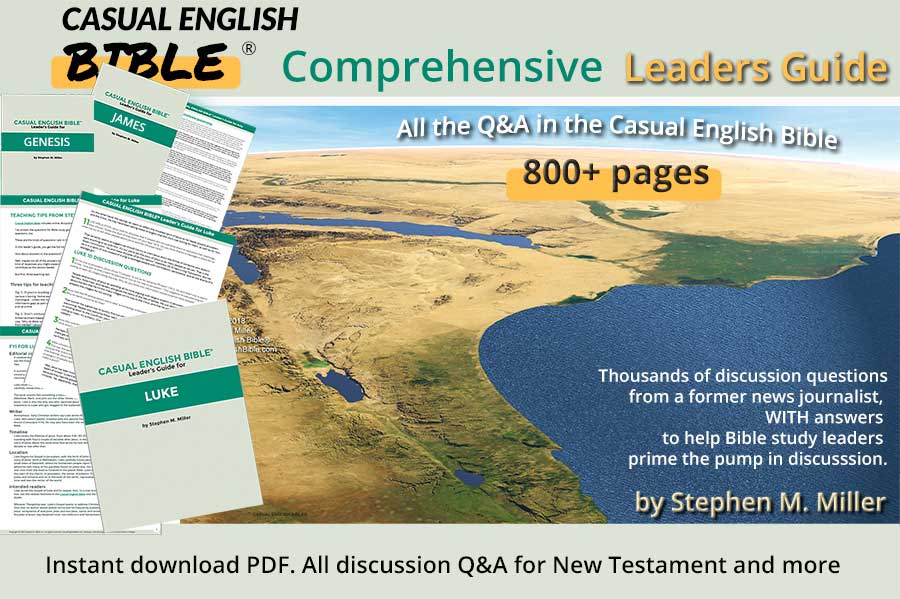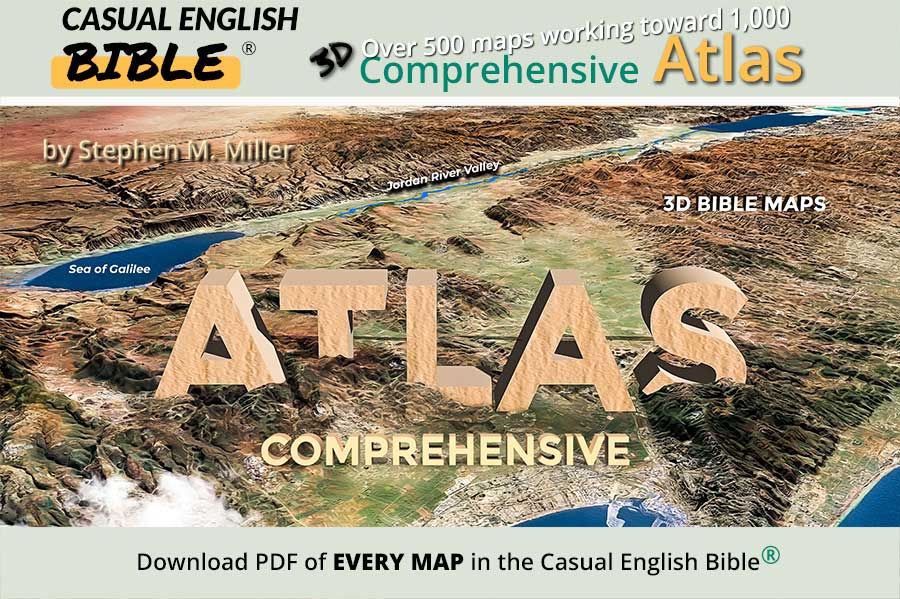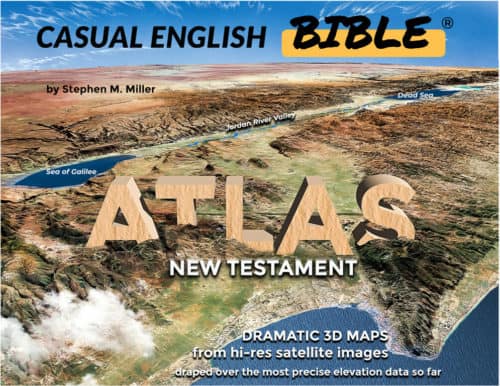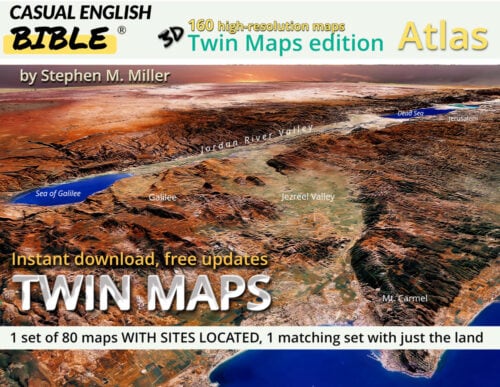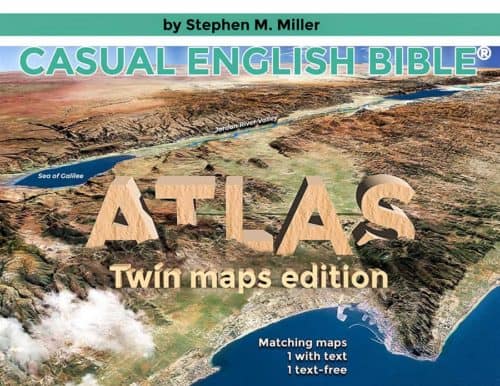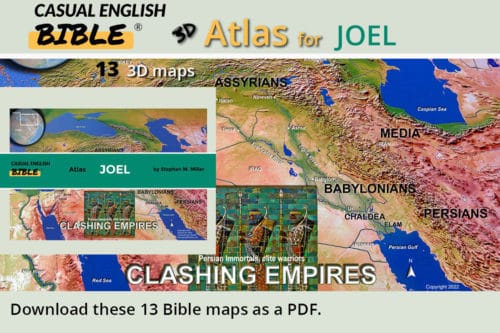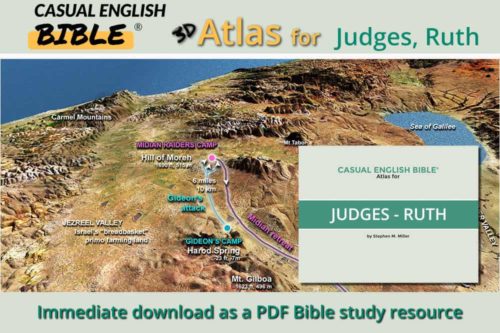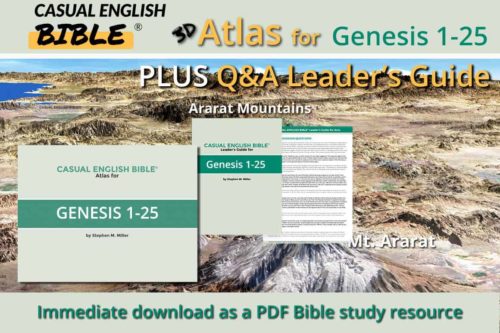Description
Preview
All the Casual English Bible’s Q&A Bible study leaders guides in one huge collection.
- ENTIRE New Testament, with Genesis and Leviticus as a bonus
- Massive Bible study leaders guide
- Over 800 pages with thousands of discussion questions and answers
- Free updates as we add more Bible books, and finish paraphrasing the Casual English Bible
- $36 (That’s more than half off price of buying individual sets of guides)
Sample Bible Q&A
Bible Q&A x 800+
This Comprehensive Bible Leaders Guide is a massive collection of all the Casual English Bible discussion questions and answers for every chapter in every book of the Bible that we’ve completed so far.
Instead of describing what you get, take a peek at the video on this page, along with these samples from selected Bible books.
Genesis 1
Q
The Creation story reads like rhythmic poetry, beating a drum “through six wonderfully pulsing choruses.” Miller says each Day in the Creation story sounds a lot like every other day—at least in the way the events are told. For example, each day ends with the same lyrics: “Nighttime passed. Morning came. The first day was over” (1:5). Do you think that might suggest we should not take the story quite so literally—as history and science—but perhaps allow for the possibility that the writer was driving with a poetic license?
A
Again, this is the perfect question to make the heads of some Christians explode. Most Christians in recent decades have not been taught that the creation story stretched across the eons. Most generations of Christians before the current one were taught that each day of creation took place over a 24-hour stretch. It would probably be hard to convince those Christians otherwise. People coming to the story with fresh eyes and a brain not programmed with a lifetime of preaching might be a little more inclined to allow the writer some poetic license. The topic is so contentious, and can be so disruptive even in a Bible study group, that it is often best to allow group members to agree to disagree on how to understand the story. This is aside from the fact that as the group leader, you’ve got it all figured out, and if they knew what was good for them, they would agree with you.
John 1
Q
John calls Jesus “the living Word of God” (1:1). “Word” meant different things to different people. Which of the following interpretations of “Word” do you think best describes Jesus?
- Greek “logos,” representing the wisdom behind all creation.
- God’s power to speak Creation into existence.
- God’s message to people delivered not by prophets, but in person.
- The Bible, in the flesh.
A
Many Christians would likely pick the version of “Word” that sees Jesus as God’s message delivered in person. But the others apply as well.
That’s the thing about the Gospel of John. It’s a book written in layers of meaning. John, or whoever else may have written this book, seems to have been a Hebrew, but he wrote in Greek, the international language of the day. He was trying to present Jesus as divine. And he did it in a way that he believes would connect with Greeks, Hebrews, and even agnostics.
Greeks saw Jesus’ link to divinity in the word logos, which to some was a word describing the engine that drives creation. Jews saw the link in the “Word of God.” God’s words spoke Creation into existence. Or they may have linked Jesus to the “Word of God” that the prophets delivered as messages from God himself. Agnostics might have seen the link to Jesus and divinity in the reference to Jesus as Creator. Some agnostics may acknowledge that Creation is one of the best arguments for the existence of a divine Creator.
John wrote in layers of meaning
John wrote in layers on purpose, it seems. There’s likely nothing in the footnote to this verse that would have come as a surprise to John. He wrote it into his script:
The original Greek word is Logos. Greek scholars such as Heraclitus said logos was the wisdom behind all of creation. This all-present wisdom created everything and guided creation along the way. For many Jewish scholars then and now, God’s Word pulled the trigger on Creation, whether that involved pulling the trigger on the Big Bang. “God said, ‘Lights.’ Lights came on…God said, ‘Land, grow a garden.’…The land grew a garden” (Genesis 1:3, 11-12). John doesn’t identify Jesus as the Word until a few paragraphs later, gradually working up to it by describing the Word as the one who “came to this world that belonged to him. But most of the people—his people—wouldn’t have anything to do with him” (1:11). Jesus came to earth as a living, breathing expression of God’s message to humanity, summed up in what is perhaps the most famous Bible verse, John 3:16.
Revelation 13
Q
Some Christians say they believe that the mark of the beast is a literal mark on a person’s forehead or arm. And they say it’s used as currency and as a way of identifying the people who worship the beast—as Revelation says. Some have speculated that it might be a 666-model chip embedded and manipulated through some kind of the world banking system. That’s why some people resist the idea of an Earth-wide currency—a currency that international travelers might love. Take a look at the footnote for 13:18 and see what you think about the theory that suggests the mark of the beast is the name and title “Nero Caesar.”
A
Here’s the footnote background info.
Some call this the mark of the beast. Some ancient copies put the number at 616. Letters had number values. The name of Nero works with both numbers, 616 and 666. He ruled AD 37-68 and was the first emperor on record to persecute Christians. His name engraved onto coins in Latin, the official language of the Romans, is “Nero Caesar.” The six letters Jews used to translate that into their language of Hebrew add up to 616. But that same name and title in Greek, the international language of the day, is “Neron Caesar.” Jews used seven letters to translate that version of the name. Those seven letters add up to 666. Another contender is Emperor Domitian (ruled AD 81-96), another aggressive persecutor of Christians. His name and title occasionally show up abbreviated on Roman coins with Greek letters that add up to 666.
Ultimate companion
to Comprehensive Leaders Guide
 Comprehensive Bible Atlas over 600 PDF maps
Comprehensive Bible Atlas over 600 PDF maps
Comprehensive Bible Atlas, with over 600 PDF maps, is the Big Fish in the pond. It’s one massive collection of ALL the Casual English Bible maps in one HUGE folder. We optimize it for use in phones and tablets. But the full res, not optimized, is not approaching 1 GB of Bible maps.
—Now over 640 pages of high resolution PDF maps
—You get many key books of the Old Testament and the ENTIRE New Testament
—Free book-by-book updates as work continues on the paraphrase and new books are added
—See Atlas preview of randomly selected maps.
Best resource for comparing other Bible translations: Bible Gateway. This isn’t an ad. It’s a recommendation from the Casual English Bible.
To support the work of paraphrasing the Casual English Bible and keeping it free online:

